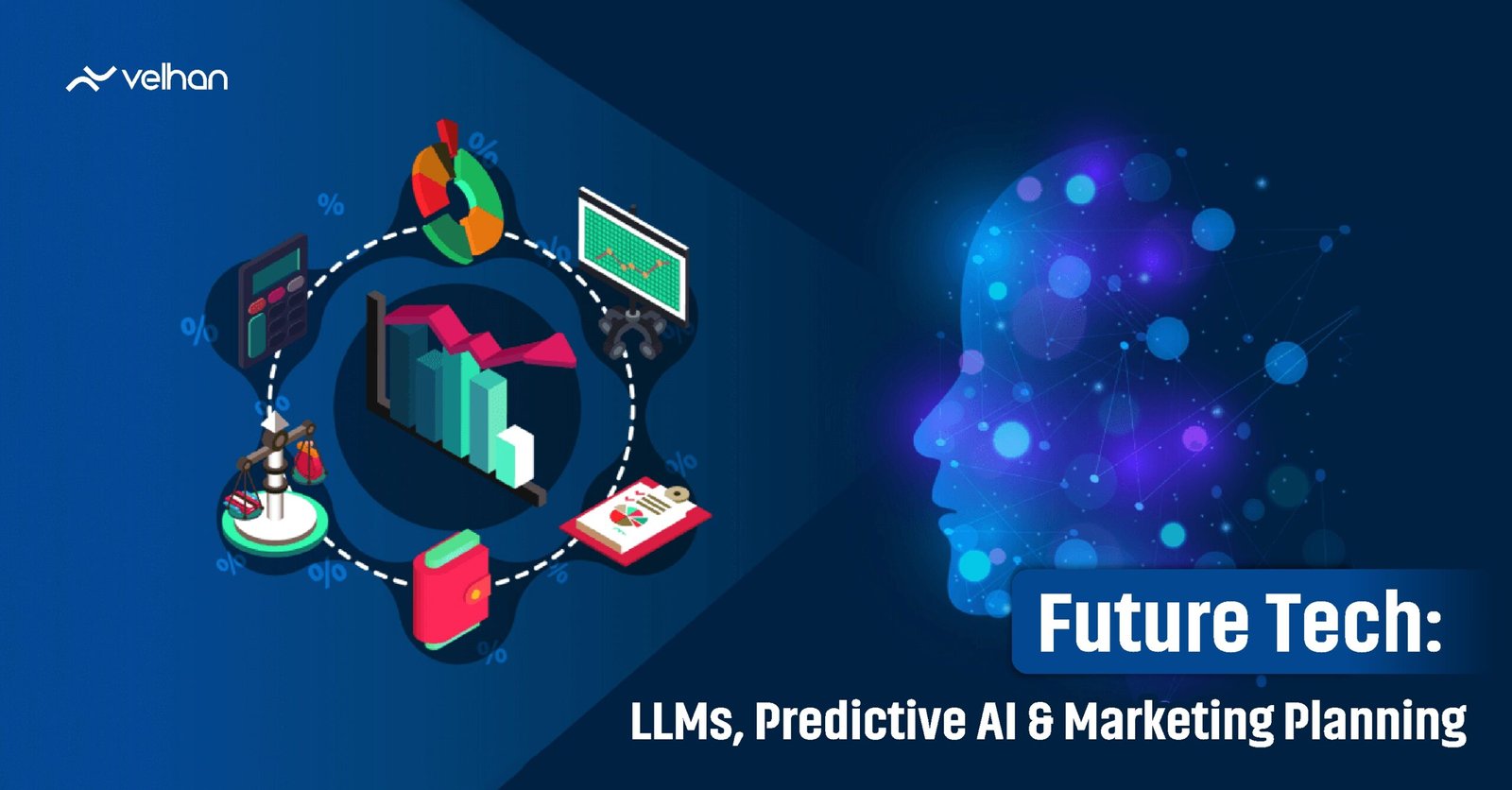
Introduction
In the fast-paced digital age, the convergence of artificial intelligence (AI) and marketing is transforming the way brands connect with audiences. Two of the most groundbreaking innovations in this space are Large Language Models (LLMs) and Predictive AI. As we look ahead, these technologies are not just shaping the future—they’re rewriting the rules of marketing strategy.
In this blog, we’ll explore:
- What LLMs and Predictive AI are
- How they impact marketing planning
- Real-world use cases
- The future of tech-driven campaigns
- SEO and content marketing implications
- How businesses can adapt today for tomorrow’s advantage
What Are LLMs?
Large Language Models (LLMs) are a subset of AI trained on massive text datasets. Examples include OpenAI’s GPT-4, Google’s Gemini, and Meta’s LLaMA. These models can generate human-like text, understand context, summarize data, translate languages, and even write code.
Key Capabilities of LLMs:
- Content generation (blogs, emails, captions)
- Chatbots and customer service automation
- Data interpretation and summarization
- Personalized user experiences
What Is Predictive AI?
Predictive AI refers to the use of machine learning algorithms to forecast future outcomes based on historical data. It’s widely used in:
- Consumer behavior prediction
- Sales forecasting
- Inventory management
- Dynamic pricing
- Churn prediction
In marketing, Predictive AI is a game-changer—it allows brands to anticipate what customers want before they ask for it.
How LLMs & Predictive AI Transform Marketing Planning
1. Hyper-Personalized Campaigns
Predictive AI can segment customers based on behavior, while LLMs can create personalized messaging at scale. This results in highly tailored campaigns that improve engagement and ROI.
2. Automated Content Strategy
LLMs can analyze trends, generate ideas, and create SEO-optimized content in minutes. Combine that with predictive insights to decide:
- When to post
- What topics to prioritize
- What tone resonates best with your audience
3. Smarter Budget Allocation
Predictive models analyze past campaign data to suggest where to spend for maximum return—whether it’s Google Ads, Facebook, or influencer partnerships.
4. Enhanced Customer Journey Mapping
By integrating Predictive AI with LLM-powered chatbots, brands can anticipate user intent and guide them more effectively through the funnel.
Real-World Use Cases
🎯 E-commerce
Amazon and Shopify stores use AI to predict buying behavior, recommend products, and personalize follow-up emails with LLM-generated text.
🏥 Healthcare Marketing
Predictive AI forecasts seasonal demand for services, while LLMs generate educational content, email sequences, and chatbot scripts.
🎬 Media & Entertainment
Streaming platforms like Netflix use AI to predict content preferences and LLMs to generate user-facing descriptions, summaries, and promotional messages.
SEO & Content Marketing in the Age of LLMs
Search engine optimization is no longer just about keywords. LLMs can:
- Analyze SERP trends
- Generate optimized meta tags, titles, and blog posts
- Suggest topic clusters
- Maintain natural language tone while remaining keyword-rich
Key SEO Tips When Using AI Tools:
- Always human-edit generated content for originality
- Focus on search intent, not just volume
- Use AI for consistency and scale, not shortcuts
Future Trends to Watch
🔮 1. AI-First Marketing Departments
Brands will soon have in-house AI agents planning, executing, and analyzing campaigns in real time.
🔄 2. Real-Time Predictive Analytics
Marketers will adjust live campaigns dynamically based on user signals, predictive trends, and AI recommendations.
🤝 3. AI Collaboration with Humans
Rather than replacing marketers, AI tools will augment creativity, free up time for strategy, and enhance decision-making.
How Businesses Should Prepare
✅ Invest in AI Tools: Start integrating LLMs like ChatGPT or Claude into your content workflows. Use platforms like HubSpot or Salesforce for predictive analytics.
✅ Upskill Your Team: Encourage your marketing team to learn prompt engineering, data analysis, and AI ethics.
✅ Build a Data-First Culture: Predictive models are only as good as the data you feed them. Centralize your data sources and maintain clean records.
✅ Stay Compliant: Ensure your use of AI aligns with evolving data privacy and copyright laws.
Conclusion
The fusion of LLMs and Predictive AI marks a new era in marketing. These technologies empower brands to be more agile, accurate, and audience-focused than ever before. The future of marketing isn’t about guessing—it’s about knowing, predicting, and creating with intelligence.
Now is the time to embrace AI-driven strategies. The companies that do will not only stay ahead of the curve—they’ll shape it.


